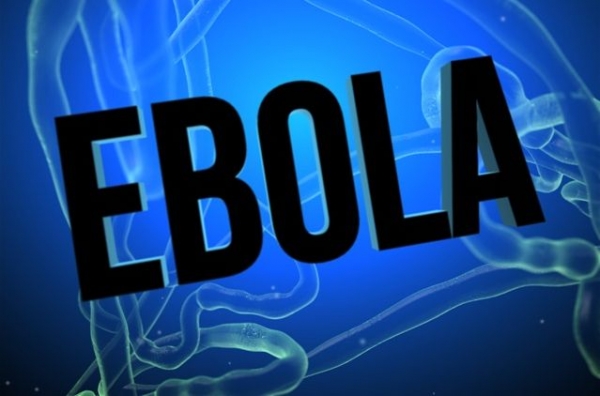But things got concrete on Tuesday when news of the Dallas case was blamed in part for the 266-point plummet of the Dow Jones Industrial Average.
And while concern over the case is understandable — even, in some respects, warranted — most of what people are reacting to is nothing to fret over.
In his news conference remarks on Wednesday, Texas Gov. Rick Perry noted that his state is one of only 13 in the United States to have completed U.S. Centers for Disease Control and Prevention training in Ebola diagnosis, laboratory verification and containment. That means there are 37 states unprepared to respond swiftly to a potential Ebola case.
Even in the Texas situation, the patient first sought care on Sept. 26 and told the emergency room nurse that he had traveled to the United States from Liberia, but nevertheless, he was sent home with antibiotics. Two days later, in critical condition, the traveler was admitted for Ebola treatment.
The Texas case has raised inappropriate fears, reflected in social media and news coverage — especially the calls to cancel all flights and visas to America from West Africa. And so far the reaction has failed to reveal anything new or truly frightening about Ebola.
But it has drawn our attention to America's unique vulnerability to contagious diseases: our health system.
The unsubstantiated concerns kicked off by the Texas case include false claims that the virus was spread through the air between monkeys housed in a military facility in the 1990s; assertions that the virus, which is only spread through physical contact with contaminated bodily fluids, could mutate into airborne form; calls for denying travel visas to travelers from West Africa; and fears that there may be other Ebola-infected fellow travelers on the plane with the Dallas patient, now infecting Americans.
Each of these views is patently wrong.
The Reston Ebola strain that infected caged monkeys in an Army facility in the 1990s was not infectious to human beings, and there is no evidence that the monkeys inhaled their infections. The scale of mutational change Ebola would have to undergo to take on flu-like, airborne transmission characteristics would be tantamount to mutating a common-cold virus into one that causes polio. And viruses do not recognize borders, visas or passports; shutting down U.S. airports and isolating travelers from specific regions have been tried as disease-control measures, and failed. During the 2009 swine flu epidemic, for example, some Asian countries quarantined entire passenger jets full of Americans and Mexicans, while Hong Kong put tourists in forced quarantines, but all those countries ended up being swept over with the flu anyway.
The United States' special vulnerability is the enormous holes in our public-health and medical-care systems.
Ebola has caused 21 outbreaks since its first in 1976, in every case exploiting spread within poorly resourced health-care settings and the households of disease sufferers who avoided hospitalization. If people suffering early symptoms of Ebola (such as acute fatigue and high fever) are immediately taken into hospitals and cared for by doctors and nurses wearing appropriate protective gear, the virus has little opportunity to spread.
America's special risk, not shared by our Canadian neighbors or European friends, is the 13.8 percent of Americans — about 43.3 million individuals — who still lack health insurance, and millions more whose policies entail copayments that are exorbitant for working people. These are the Americans who routinely tough out the flu, fever, aches and pains because seeking medical care is prohibitively expensive. If they become sick enough to feel desperate, the uninsured and underinsured of America go to public hospital emergency rooms for care, where waiting times in often-crowded settings can stretch on for hours. This reality is compounded by a weakened public health infrastructure: 52 health agencies, including 48 states, three territories and Washington, D.C., have reported budget cuts since 2008.
If America wants to stop Ebola in its tracks, as CDC Director Tom Frieden put it in his Sept. 30 news conference, every state needs to ensure the following is mandated:
• Nobody suffering from the primary symptoms of Ebola can be turned away from care for lack of insurance or ability to pay.
• Recent travel histories must be taken on all patients suffering from high fevers and other Ebola symptoms, and those who have been in Liberia, Sierra Leone or Guinea within the past 21 days — the maximum incubation time for Ebola — should be removed immediately from the ER setting and placed in isolation care pending lab diagnosis.
• Public hospitals that routinely have crowded emergency rooms and long wait times for medical care should now put high priority on patients presenting with fevers.
The window for stopping hospital spread of diseases like Ebola is going to close as soon as the flu season begins, when feverish patients are commonplace. Influenza has yet to slam America for the 2014-15 season, and that is fortunate. Once ERs and doctors' offices get swamped with influenza sufferers — feverish, achy, exhausted — spotting Ebola cases will be complex and perhaps impossible in the absence of a rapid diagnostic test.
America's special vulnerability to Ebola is its limitations on access to health care. In times of contagion, societal risk rises with every uninsured or underinsured individual who struggles to work or goes to school with a fever and avoids bankrupting visits to health providers.
One doesn't need to have a political position up or down on "Obamacare" to recognize and solve this.
Link to original article from The Chicago Tribune

